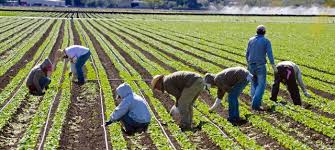Environmental economics is the application of economics principles in the study of environmental resources. Environmental economics, like economics, is divided into two, namely micro environmental economics and macro environmental economics.
The micro environmental economics aspect is concerned with the study of individuals and small groups in the use and management of environmental and natural resources, while macro environmental economics deals with the economic performance of entire economies in relation to the environment. These principles are particularly significant for agricultural projects, where sustainable resource management is essential.
The environment is an important factor in the life of man as it provides the basic services required for production and the household sector of the economy. It is the basic source of both renewable and non-renewable resources such as minerals, forest, energy, clean air, and biodiversity. Other resources that provide life supporting services are:
Read Also: Debeaking of Birds, the Need for Debeaking and the Ideal time for Debeaking the Birds
Natural Resources
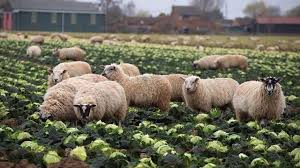
Natural resources are useful things provided by nature. Therefore, anything obtained from the physical environment to satisfy human needs relates to natural resources. Basic human needs are fulfilled by materials provided by nature itself.
Broadly defined, natural resources include all the “original” elements that comprise the earth’s natural endowment and life support systems such as air, water, soil, the earth’s crust, and radiation from the sun.
Some representative examples of natural resources are arable land, wilderness areas, mineral fuels and non-fuel minerals, watersheds, and the ability of the environment to degrade waste and absorb ultraviolet light from the sun.
These stocks of nature, useful to mankind, are called natural resources. In the primitive age, man used only those resources that supported his life, but the process of economic growth and increase in population has led to mismanagement of natural resources—a challenge that directly impacts agricultural projects.
Natural resources are generally grouped into two major categories:
1. Renewable Resources
These are resources that are capable of regenerating themselves within a relatively short period, provided the environment in which they are nurtured is not unduly disturbed. They are usually present in unlimited quantity in nature and are not likely to be exhausted by human activities.
Examples include plants, fish, forests, soil, solar radiation, wind, tides, air, and water among others. These renewable resources can be further classified into two distinct groups: biological resources and flow resources.
i. Biological resources consist of the various species of plants and animals. They have no distinctive feature that is important for consideration here. While these resources are capable of self-regeneration, they can be irreparably damaged if exploited beyond a certain critical threshold. Hence, their use should be limited to a certain critical zone.
Both the regenerative capacity of these resources and the critical zone are governed by natural biological processes. Examples of this type of resource are fisheries, forests, livestock, and all forms of plants, which are essential to many agricultural projects.
ii. Flow resources include solar radiation, tides, and water streams. Continuous renewal of these resources is largely dictated by the atmosphere and hydraulic circulation, along with the glow of solar radiation.
Although these resources can be harnessed for specific use (such as energy from solar radiation or waterfalls), the rate at which the flows of these potential resources are regulated is largely governed by nature.
This does not, however, mean that humans are totally incapable of either augmenting or decreasing the amount of flow of these resources. A good illustration of this would be the effect that greenhouse gas emissions (in particular carbon (IV) oxide emissions) have on global warming.
2. Non-renewable Resources: Non-renewable resources are those resources that either exist in fixed supply or are renewable only on a geological timescale, whose regenerative capacity can be assumed to be zero for all practical purposes. Non-renewable resources cannot be replaced when the initial stock is used up.
Examples of these resources include metallic minerals like iron, aluminum, copper, and uranium, and non-metallic minerals like fossils, clay, sand, and phosphates; coal, petroleum, natural gas, etc. The stock of these resources is limited.
They are susceptible to degradation in quantity and quality by human activities. Therefore, they must be carefully managed to avoid their shortage until acceptable substitutes are found.
Non-renewable resources can be classified into two broad categories: the first group includes those resources which are recyclable, such as metallic minerals; the second group consists of non-recyclable resources, such as fossil fuels.
Read Also: 15 Medicinal Health Benefits Of Echinacea purpurea (Purple Coneflower)
Ecology
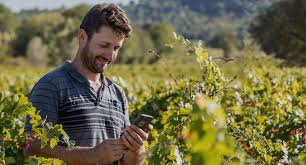
Ecology is the branch of science that systematically studies the relationship between living organisms and the physical and chemical environment in which they live.
Ecology examines the life histories, distribution, and behavior of individual species as well as the structure and function of natural systems at the levels of populations, communities, ecosystems, landscape, and biosphere.
Ecological economists have analysed the interdependence between the physical environment and economic activities in their models. According to them, some economic activities may be the cause of environmental degradation.
Industrial Ecology
Industrial ecology is the means by which humanity can deliberately and rationally maintain a desirable carrying capacity, given continued economic, cultural, and technological evolution. It is a system in which one seeks to optimise or improve the total material cycle from virgin materials to finished material, components, product, obsolete product, and ultimate disposal. Factors to be optimised include resources, energy, and capital.
Industrial ecology redefines waste as a starting material for another industrial process. It also seeks to structure the economy’s industrial base along the lines of natural economic systems whose cyclical flows of material and energy are both efficient and sustainable.
Environmental Pollution
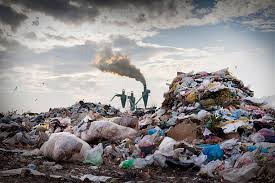
A change in the physical, chemical, or biological characteristics of the air, water, or soil that can affect the health, survival, or activities of human beings or other living organisms in a harmful manner is known as environmental pollution. Pollution in economics can be regarded as any loss of human well-being arising from physical environmental changes.
Ecosystem
Ecosystem is a term applied to a particular relationship between living organisms and their environment. An ecosystem has two main components: (i) abiotic and (ii) biotic.
All non-living components of the environment present in an ecosystem are known as abiotic components. These include the inorganic and organic components and climatic factors. On the other hand, the living organisms of an ecosystem are known as its biotic components, which include plants, animals, and microorganisms.
Ecosystems may be affected by anthropogenic factors. They also face short- and long-run natural changes imposed from both within and outside the systems, such as climatic changes. Let us explain the functions of ecosystems with examples:
i. Gas Regulation: Regulates atmospheric chemical composition.
ii. Water Supply: Storage and retention of water.
iii. Raw Materials and Food Production: Portion of gross primary production extractable as raw materials and food.
iv. Erosion Control: Retention of soil within an ecosystem; sediment retention.
v. Genetic Resources: Sources of unique biological materials and products.
vi. Disturbance Regulation: Damping and maintenance of ecosystem response to environmental fluctuations.
vii. Nutrient Cycling: Storage, internal cycling, processing, and acquisition of nutrients.
viii. Recreation: Providing recreation opportunities for tourism.
ix.Climate Regulation: Regulation of global temperature.
The major components within the ecosystem are the lithosphere (solid earth), the atmosphere, the hydrosphere (water), and the biosphere. There is also the cryosphere (of ice and snow).
Ecosystem Diversity
The ecosystem diversity can be classified into two major types: the aquatic and terrestrial ecosystems. The aquatic ecosystems are further classified into marine, estuarine, and freshwater, while the terrestrial ecosystems are divided into sixteen biomes representing major formations in terms of vegetation types.
Social Carrying Capacity
Use of natural resource services is compared with defined biophysical limits for the supply of such services. Biophysical carrying capacity expresses “the maximum population size that could be sustained under given technological capabilities.
Social carrying capacity can be defined as “the maximum number of human beings which the environment can support.” The population generally stabilises around the carrying capacity.
Social carrying capacity is determined by the influence of human consumption patterns, technological changes, and their impact on the environment. It stresses the fact that nature’s bounds can be disobeyed by a rapidly growing population and accelerated use of natural resources.
Sustainable carrying capacity, on the other hand, is the maximum number of persons that can be supported indefinitely in an area with a given technology and set of competitive habits without causing environmental degradation.
Eco Development and Economic Sustainability
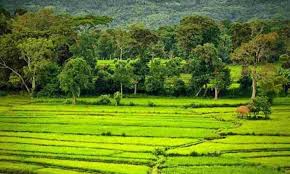
Eco development has been defined as ecological sound development, which is a process of positive management of the environment for human benefit. Eco development and sustainable development are interchangeable. Economic sustainability is concerned with maintaining a non-declining level of economic welfare now and into the future.
This economic welfare is derived from the income generated by the capital stocks, which include manufactured capital, human capital, and natural capital. These principles are fundamental to agricultural projects that aim for long-term viability.
Environmental Goods
Environmental goods are public goods. They include air quality, water quality, and sun heat, etc. Environmental goods are unique in nature. Excess use of these may lead to environmental degradation.
These basic concepts and contents in environmental economics provide a vital foundation for agricultural projects. Sustainable agricultural practices depend on the careful management of natural resources, ecosystems, and environmental goods, ensuring that agricultural production remains efficient, ecologically sound, and resilient in the face of economic and environmental challenges.
Do you have any questions, suggestions, or contributions? If so, please feel free to use the comment box below to share your thoughts. We also encourage you to kindly share this information with others who might benefit from it. Since we can’t reach everyone at once, we truly appreciate your help in spreading the word. Thank you so much for your support and for sharing!
Read Also: How to Grow Your Business Quickly and Easily

